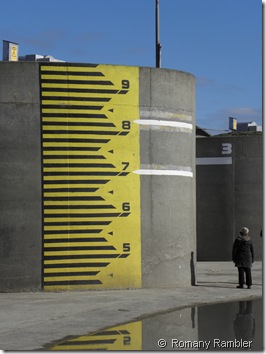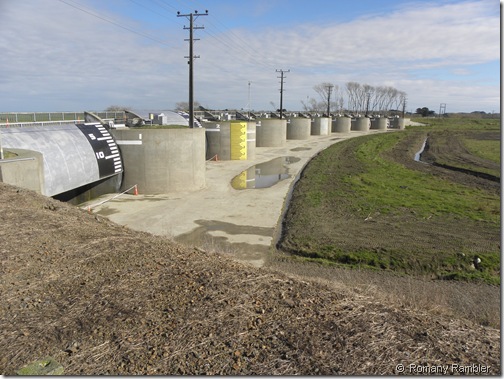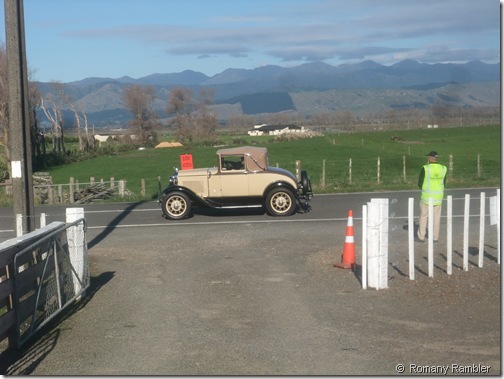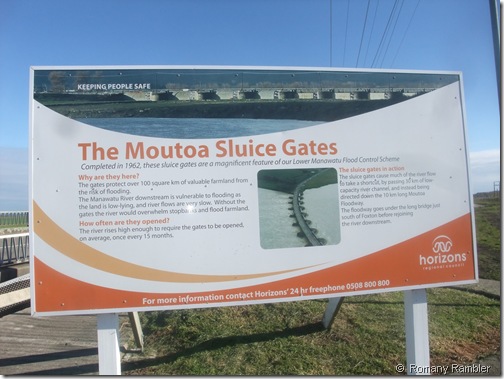Celebrating 50 years of operation, the Moutoa sluice gates have been protecting the local area against the ravages of flooding. The floodgates were open to view today, courtesy of Horizons Regional Council. After the official presentation to important guests, (no, we weren’t invited) free buses filled with interested members of the public arrived from Palmerston North, Foxton, Shannon and Levin. This seemed an interesting local outing, so we phoned the hot line several weeks ago to ensure our places were booked on the bus.
On arrival at the sluice gates, we were put into three groups and sent on our way with one of the engineers. The Manawatu flood plain was previously swampy land, and had a thriving flax industry. When farming became more widespread, it was apparent that something needed to be done to protect the productive farm land, although it took many years of planning, surveying, designing, and legal battles. The flood of 1953 was the catalyst needed to develop a comprehensive flood and erosion scheme. The Moutoa sluice gates were constructed between 1959 and 1962, and was the biggest river control work undertaken in the country, at the time.
The nine steel radial gates, each 15m wide by 4.5m tall, and weigh 15 tonnes each. They are raised by pulleys and wire ropes, by electric motors. The gates are opened slowly, and no more than necessary, at the right speed to keep the river at the target level. The construction took 26,000 tonnes of concrete and 1000 tonnes of reinforcing steel, and the build cost 600,000 pounds at the time. That’s $18 million in today’s terms.

During a flood, the river downstream of the gates cannot carry all the water away because the flow is too slow because of a very flat gradient down to the sea. The sluice gates are opened when needed, so that the water can flow out of the river and down the 10km floodway, which is bordered with stop banks, and bypasses 30km of low capacity river channel.
Farmers who lease the Horizon owned land are given notice to safely remove stock and drop their fences down before the gates are opened. The gates have been partially opened 39 times during flooding in the last 50 years, and only fully opened 3 times. It is certainly an impressive structure when seen up close. In 1990 the gates were recognised by the Institution of Professional Engineers of New Zealand as having made an outstanding contribution to NZ’s engineering heritage and prosperity.
We climbed the narrow stair case to view the control room, with a bank of buttons all ready for action. But not today, the sun was shining, and there was no sign of flooding at all.
Work is done continually on the stop-banks. Silt removal is ongoing, and willows are planted, layered, and trimmed when they get too large. Various types of willows are used, including Japanese willows, which are resistant to salt water.
At the end of our tour we gratefully enjoyed a cup of coffee and a muffin, just what we needed to recharge the batteries. While we were munching on our muffins we noticed a line of vintage cars driving by, all off on a Saturday drive, no doubt.
Then it was time to board the bus for our return journey. What an interesting morning it was. Next time we drive along this road which links Shannon and Foxton and cross over the bridge, we will know exactly what that strange metal and concrete structure is.









No comments:
Post a Comment